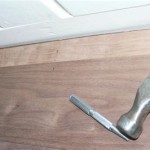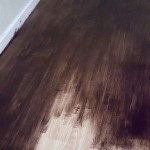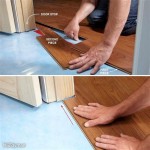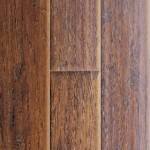Cleaning Vinyl Plank Flooring: A Comprehensive Guide
Vinyl plank flooring has gained significant popularity due to its durability, water resistance, and aesthetic appeal. It offers a versatile and relatively low-maintenance flooring option for various areas within a home or commercial space. However, like all flooring surfaces, vinyl plank requires regular cleaning to maintain its appearance and extend its lifespan. This article provides a comprehensive guide to cleaning vinyl plank flooring, covering essential cleaning practices, addressing specific stain removal, and exploring preventative measures to keep the floor looking its best.
Regular Cleaning Practices for Vinyl Plank Flooring
Consistent cleaning is the cornerstone of maintaining vinyl plank flooring. The frequency of cleaning will depend on factors such as foot traffic, the presence of pets, and the level of outdoor elements tracked into the space. A general guideline suggests sweeping or vacuuming the floor at least once a week, and mopping every one to two weeks.
Sweeping and Vacuuming: The primary aim of sweeping or vacuuming is to remove loose dirt, dust, and debris that can scratch the surface of the vinyl plank flooring over time. A soft-bristled broom is recommended for sweeping, as stiffer bristles can potentially cause scratches. When vacuuming, use a vacuum cleaner with a hard floor attachment or a brush roll that can be disengaged. Avoid using a vacuum cleaner with a beater bar, as this can also damage the flooring.
Mopping: Mopping is essential for removing surface stains and grime that sweeping or vacuuming cannot address. It is crucial to use a cleaning solution specifically designed for vinyl plank flooring, as harsh chemicals can damage the protective top layer. A neutral pH cleaner is generally recommended. Avoid using abrasive cleaners, bleach, or ammonia-based products, as these can dull the finish and potentially discolor the flooring.
When mopping, use a microfiber mop, as these mops are gentle on the surface and effectively pick up dirt and grime. Wring out the mop thoroughly to avoid saturating the flooring with water. Excess water can seep into the seams between the planks and potentially damage the subfloor. Mop in the direction of the planks, overlapping each stroke slightly to ensure complete coverage. After mopping, allow the floor to air dry completely.
For high-traffic areas or areas prone to spills, consider using a damp mop more frequently. Regular damp mopping helps prevent dirt and grime from accumulating and becoming more difficult to remove.
Addressing Specific Stains and Spills on Vinyl Plank Flooring
Accidents happen, and dealing with spills and stains promptly is crucial to prevent permanent damage to vinyl plank flooring. Different types of stains require different cleaning approaches. It is important to identify the type of stain before attempting to remove it.
Food and Beverage Stains: For common food and beverage spills, such as juice, coffee, or sauces, immediately blot the spill with a clean, absorbent cloth. Avoid rubbing the spill, as this can spread the stain and make it more difficult to remove. Once the excess liquid has been absorbed, dampen a clean cloth with warm water and a mild dish soap solution. Gently wipe the stained area, working from the outside of the stain towards the center. Rinse the area with clean water and dry with a clean cloth.
Grease and Oil Stains: Grease and oil stains can be more challenging to remove. Start by blotting the excess grease or oil with a clean paper towel. Then, sprinkle a small amount of baking soda onto the stain. Baking soda is a natural absorbent and can help draw the grease out of the flooring. Let the baking soda sit for 15-20 minutes, then vacuum it up. Wipe the area with a clean cloth dampened with warm water and a mild dish soap solution. Rinse thoroughly and dry.
Ink Stains: Ink stains can be stubborn. Try using rubbing alcohol to remove ink stains. Dampen a clean cloth with rubbing alcohol and gently blot the stain. Avoid rubbing vigorously, as this can spread the ink. Continue blotting until the ink is removed. Wipe the area with a clean, damp cloth and dry.
Scuff Marks: Scuff marks are common on vinyl plank flooring, especially in high-traffic areas. A simple eraser can often remove scuff marks. Gently rub the eraser over the scuff mark until it disappears. Alternatively, you can use a clean tennis ball to buff out scuff marks. Rub the tennis ball over the scuff mark until it is removed.
Stubborn Stains: For particularly stubborn stains, you can try a specialized vinyl floor cleaner. Always follow the manufacturer's instructions carefully when using a specialized cleaner. Test the cleaner in an inconspicuous area first to ensure it does not damage the flooring.
It is important to note that prolonged exposure to certain substances, such as dyes and chemicals, can permanently stain vinyl plank flooring. Therefore, prompt action is always the best approach when dealing with spills and stains.
Preventative Measures to Protect Vinyl Plank Flooring
Prevention is always better than cure, and implementing preventative measures can significantly reduce the need for extensive cleaning and prolong the lifespan of vinyl plank flooring. Several simple steps can be taken to minimize wear and tear and protect the flooring from damage.
Use Doormats and Area Rugs: Placing doormats at entrances can trap dirt and debris before they are tracked onto the flooring. Area rugs in high-traffic areas, such as hallways and living rooms, can provide an additional layer of protection and reduce wear and tear. Choose rugs with non-slip backings to prevent them from sliding and scratching the floor.
Use Furniture Pads: Furniture legs can scratch and dent vinyl plank flooring. Attach furniture pads to the legs of all furniture, including chairs, tables, and sofas. Consider using felt pads, as they are soft and durable. Regularly check the pads for wear and tear and replace them as needed.
Avoid Wearing Shoes with Heels: High heels can dent and scratch vinyl plank flooring. Encourage residents or visitors to remove their shoes, especially high heels, before walking on the flooring. Alternatively, provide shoe covers for those who prefer to wear shoes indoors.
Lift, Don't Drag: When moving furniture or heavy objects, always lift them instead of dragging them across the floor. Dragging can cause scratches and gouges. If you must move heavy objects, use furniture sliders to protect the flooring.
Trim Pet Nails: Pets can scratch vinyl plank flooring with their nails. Regularly trim your pets' nails to minimize the risk of scratches. Consider placing scratching posts or mats in areas where pets frequently scratch.
Avoid Harsh Chemicals: As mentioned earlier, avoid using harsh chemicals, such as bleach and ammonia-based cleaners, on vinyl plank flooring. These chemicals can damage the protective top layer and discolor the flooring.
Protect Against Sunlight: Prolonged exposure to direct sunlight can cause vinyl plank flooring to fade or discolor over time. Use curtains, blinds, or window film to protect the flooring from excessive sunlight. Rotate area rugs periodically to ensure even exposure to sunlight.
By implementing these preventative measures, you can significantly reduce the risk of damage and maintain the appearance of your vinyl plank flooring for years to come. Regular cleaning, prompt stain removal, and proactive protection are key to keeping the floor looking its best.
Proper maintenance, including consistent cleaning and preventative measures, ensures that vinyl plank flooring retains its aesthetic appeal and functionality for an extended period. Adhering to manufacturer recommendations regarding cleaning products and techniques is also important for preserving the integrity of the flooring. A commitment to these practices will protect the investment in vinyl plank flooring and contribute to a clean and attractive living environment.

How To Clean Vinyl Flooring Without Damaging It Advice From Bob Vila

How To Clean Vinyl Plank Flooring Cutesy Crafts

How To Clean Vinyl Plank Flooring Carpet Go

How To Deep Clean Vinyl Floors Practically Spotless

Tips How To Clean Vinyl Flooring 4 Easy Steps Expert Advice

How To Clean Vinyl Floors Tarkett

How To Clean Vinyl Plank Floor With The Right Equipment And Methods

How To Clean Vinyl Floors A Janitor S Story Com

Vinyl Plank Flooring Sandless In Seattle

How To Clean Vinyl Plank Flooring Maidforyou
Related Posts








